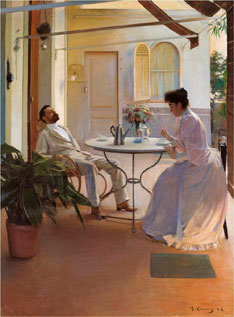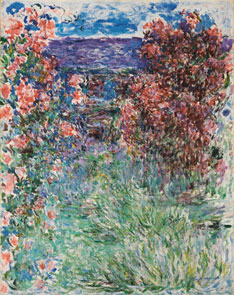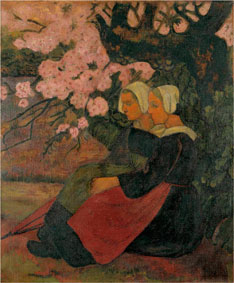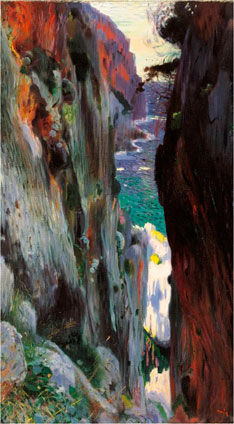Fin-de-siècle
One of the most profound transformations in the history of art took place in the last third of the nineteenth century. Contrary to the habit of working in the studio, the Impressionists painted their canvases out of doors, en plein air. For the very first time, the execution of paintings by means of superimposed brush strokes was thrown into relief and the colour black was forsaken for bright colours, but their most radical contribution, especially in the case of Claude Monet, was undoubtedly the attention paid to the optical appearance of things rather than to their actual material nature.
Modernism was represented in Spain by the painters Ramon Casas, Santiago Rusiñol and Joaquín Sorolla. The first two trained in Paris instead of Rome, as had been the norm up until then. In the French capital they witnessed the spreading of Impressionism at the beginning of the last decade of the nineteenth century. From that moment on they began to develop a style of painting verging on Impressionism and close to artists like James McNeill Whistler and John Singer Sargent, who had taken Impressionist innovations to the field of portraiture. Some of their most famous works, alongside those by their European and American colleagues (suffice it to mention Armand Guillaumin, Childe Hassam and William Merritt Chase), focus on modern life in large cities. In his turn, Joaquín Sorolla abandoned his early regionalist and social form of Naturalism and moved towards Impressionism after frequenting Sargent, Giovanni Boldini, Anders Zorn and Peter S. Krøyer in the early twentieth century. His mature works reveal great skill in the use of quick and sketchy brush strokes that were capable of capturing different nuances of light and colour.
Around the late nineteenth century new plastic trends encompassed by what is known as Post-Impressionism emerged in Paris. One of the most influential groups was that of the Nabi painters—among others, Paul Sérusier, Maurice Denis, Édouard Vuillard and Pierre Bonnard—who conceived the picture as a ‘flat surface covered with colours, put together in a certain order.’ Post-Impressionism, and especially Nabi painting, had quite an impact on the work of Catalan artists such as Isidre Nonell, Ricard Canals, Joaquim Mir and Hermen Anglada i Camarasa, who liberated their palettes at the turn of the century before venturing down personal paths that always embraced a pleasant and/or expressive conception of colour.
-

Ramon Casas i Carbó
Interior at Outdoors
1892- Oil on canvas.
161 x 121 cm
- Oil on canvas.
-

Claude Monet
The House among the Roses
1925- Oil on canvas.
92.3 x 73.3 cm - On deposit at Museo Thyssen-Bornemisza
- Oil on canvas.
-

Paul Sérusier
Two Breton Women under an Apple Tree in Flower
1892- Oil on canvas.
73.5 x 60.5 cm - On deposit at Museo Thyssen-Bornemisza
- Oil on canvas.
-

Joaquim Mir i Trinxet
The Abyss. Majorca
c. 1901-1904- Oil on canvas.
75 x 98 cm
- Oil on canvas.

